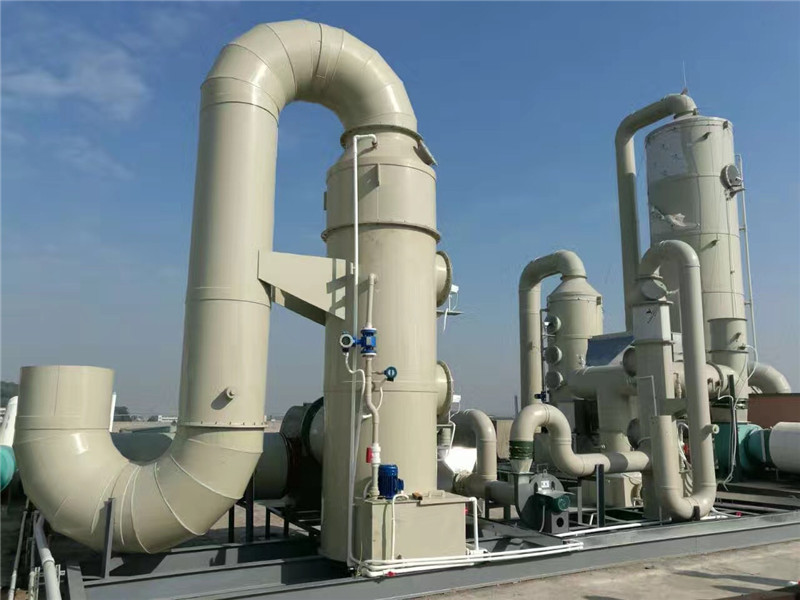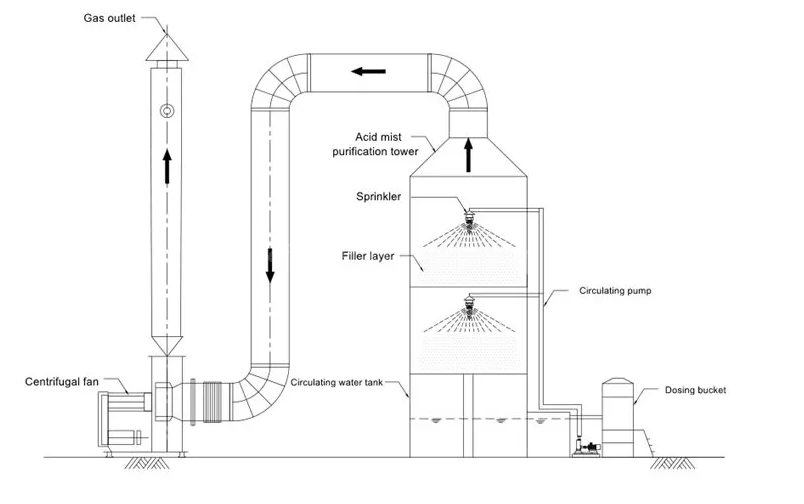- All
- Product Name
- Product Keyword
- Product Model
- Product Summary
- Product Description
- Multi Field Search
Views: 15 Author: China Xicheng Publish Time: 2021-08-05 Origin: China Xicheng
The gaseous pollutants in the odor gas mainly include ammonia, sulfur and organic waste gas. The odor is bad. With the treatment methods such as aeration, the odor is volatilized. The strong odor not only threatens the health and safety of the on-site staff, but also Pollution to the surrounding environment, causing demolition. At present, the control technologies for malodor mainly include absorption, adsorption, oxidation and combustion, among which absorption methods include filler wet absorption method, fine mist wet absorption method, activated carbon absorption method, and biological filter method and thermal oxidation method, etc. .

According to the Japanese Odor Prevention Act, there are 22 sources of odorous substances. The odor from urban sewage treatment facilities is related to the source of sewage. It is mainly composed of six substances: H2S, CH3SH, (CH3) 2S, (CH3) 2S2, NH3, (CH3) 3N and so on. In practical applications, the design of deodorizing facilities often takes the first five components such as H2S as the main consideration.
The seasons change in regions, and the water quality varies. The substances and concentrations that produce odors also change with the seasons. The differences in the treatment processes and sections (facility equipment) of various sewage plants will also cause the main odor substances to change. To design an odor treatment facility, you first need to understand the main components and concentration of odor. In fact, for newly-built sewage treatment facilities, it is often difficult to accurately measure the measured odor data.

The odor is roughly fishy [amine CH3NH2, (CH3) 3N], ammonia odor [ammonia NH3], rotten meat odor [diamine NH2 (CH2) 4NH2], rotten egg odor (hydrogen sulfide H2S), rotten cabbage odor [Organic sulfide (CH3) 2S], fecal odor [methylindole C8H5NHCH3] and the special odor of some production wastewater
The chemical deodorization method mainly uses chemical agents or chemical methods to react with malodorous substances to produce odorless substances to achieve the purpose of deodorization. Because most of the malodorous substances are acidic or alkaline, the most effective method is to neutralize the deodorization with sodium hydroxide, sodium carbonate, sulfuric acid, hydrochloric acid and other acid and alkali. Among them, the water washing method is only effective for water-soluble malodorous substances. The problem of secondary pollution is generally only used as a pretreatment method. Therefore, wet chemical absorption and combustion treatment methods are mostly used in the current treatment processes in various countries.

The wet chemical absorption method is one of the most mature and widely used odor removal methods, and tower absorption is the dominant trend in the development of many years of experience. There are three commonly used wet chemical absorption towers: packed bed scrubber, spray tower and venturi scrubber. The basic principle of the chemical absorption method is: the odorous gas is captured into the liquid through a spray or packed absorption tower, and the odorous molecules attached to the particulate matter are absorbed and oxidized from the air by the wet method. The odorous gas and medicine are removed from the air. The emulsifying agent in the liquid is removed from the solution by reaction, and it can also react with strong oxidants to form water-soluble odorless substances for absorption and removal.
| | N0.34 Zhenxing Road (Shengtaian Heavy Industrial Park B), Loucun, Guangming New Dist, Shenzhen, Guangdong, China |
| | +86 18028775826 |
| | Leyte@china-xicheng.com |